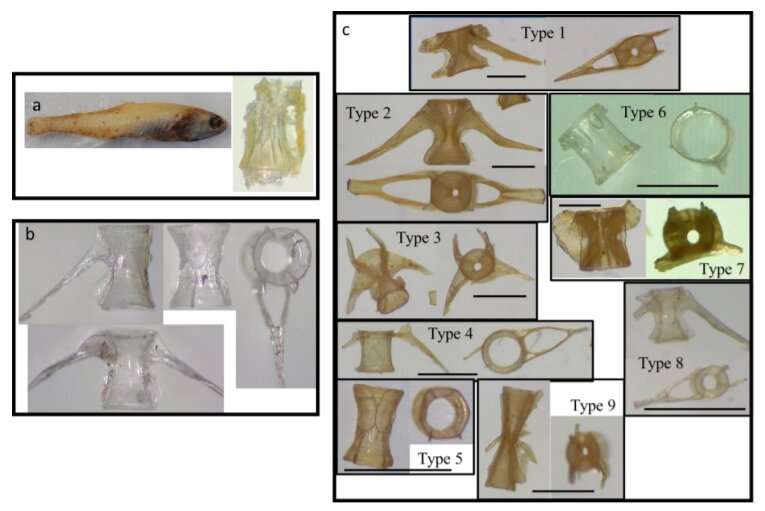
An international team of researchers reports evidence that a warmer ocean leads to decreases in fish size. In their study, published in the journal Science, the group analyzed a sediment sample from the ocean floor providing evidence of ocean life going back 130,000 years, to a time when the planet was significantly warmer. Moriaki Yasuhara and Curtis Deutsch, with the University of Hong Kong and Princeton University respectively, have published a Perspective piece in the same journal issue outlining the work done by the team.
Over the past several decades, ocean scientists have come to suspect that if the world's oceans grow warmer, fish might become smaller—warmer water contains less oxygen, and the bigger the fish, the more oxygen it needs to survive. Prior research has shown that the oceans have become warmer and more acidic due to the extra carbon dioxide in the air. In this new effort, the researchers sought to learn more about what might happen to the world's oceans if global warming is not mitigated. They noted that 130,000 years ago, the planet was approximately 2 degrees Celsius warmer than it is today, coinciding with temperature predictions for the year 2100 under climate change. To find out what was going on with the ocean during that time, they set sail from Peru to a spot 130 kilometers from shore, right in the middle of one of the most productive fishing areas on the planet. There they set up a drilling platform and extracted a 20-meter core sample. Prior research indicated that a sample from this depth would be sufficient to represent ocean conditions during the last interglacial period.
The researchers examined the core sample centimeter by centimeter, and found that during the last ice age, fish were considerably smaller than those in the same area today, and comprised different species of fish. Instead of anchovies, which dominate today, they found fish that resembled goby. Such fish are notably smaller and require far less oxygen to survive than anchovies.
Moriaki Yasuhara et al, Paleobiology provides glimpses of future ocean, Science (2022). DOI: 10.1126/science.abn2384
© 2022 Science X Network
Citation: Evidence that smaller fish dominated during last interglacial period (2022, January 7) retrieved 7 January 2022 from https://ift.tt/31yOBkw
This document is subject to copyright. Apart from any fair dealing for the purpose of private study or research, no part may be reproduced without the written permission. The content is provided for information purposes only.
"fish" - Google News
January 07, 2022 at 09:00PM
https://ift.tt/31yOBkw
Evidence that smaller fish dominated during last interglacial period - Phys.org
"fish" - Google News
https://ift.tt/35JkYuc
https://ift.tt/3feFffJ
Bagikan Berita Ini















0 Response to "Evidence that smaller fish dominated during last interglacial period - Phys.org"
Post a Comment